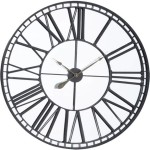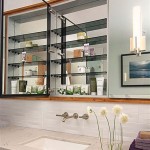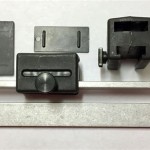Understanding Rectangular Tilt Mirrors: Features, Applications, and Benefits
Rectangular tilt mirrors are specialized optical components designed to redirect a beam of light or other electromagnetic radiation at a specific angle. Their defining features are their rectangular shape and the ability to be tilted and precisely adjusted, making them essential tools in various scientific, industrial, and optical applications. Understanding their characteristics, functionality, and appropriate use is crucial for achieving optimal performance in systems where beam steering is required.
Unlike standard flat mirrors that reflect light at an angle equal to the angle of incidence, tilt mirrors offer the added capability of angular adjustment. This functionality allows for precise manipulation of the reflected beam's direction, making them suitable for alignment, beam steering, and fine-tuning optical systems. The rectangular shape is chosen for practical reasons, providing a stable and easily mountable platform compared to other geometries like circular formats.
Key Point 1: Design and Functionality of Rectangular Tilt Mirrors
The design of a rectangular tilt mirror typically involves a reflective surface, a substrate, and a mounting mechanism that facilitates tilting. The reflective surface is usually a thin, highly reflective coating applied to a rigid substrate. Common coating materials include metals like aluminum, gold, and silver, or dielectric coatings designed for specific wavelengths or ranges of wavelengths. The choice of coating depends on the required reflectivity at the wavelengths of interest and the environmental conditions the mirror will be exposed to.
The substrate is the structural foundation of the mirror, providing rigidity and flatness. Materials commonly used for substrates include glass (e.g., BK7, fused silica), ceramics (e.g., Zerodur), and, in some cases, metals. The substrate material is selected based on its thermal stability, surface quality, and refractive index uniformity. For high-precision applications, materials with low coefficients of thermal expansion are preferred to minimize distortions caused by temperature variations.
The mounting mechanism is crucial for enabling precise and controlled tilting of the mirror. This typically involves a kinematic mount, which allows for independent adjustment of the mirror's angular orientation in two orthogonal axes (typically pitch and yaw). Kinematic mounts minimize stress and distortion on the mirror surface during adjustment. Fine-threaded screws or micrometers are often used to provide high-resolution angular control. The stability and repeatability of the tilting mechanism are critical for maintaining precise beam alignment over time.
When light strikes the reflective surface, it obeys the law of reflection: the angle of incidence equals the angle of reflection. By tilting the mirror, the angle of incidence changes, which in turn alters the direction of the reflected beam. The amount of angular deflection of the beam is twice the angle of tilt. Therefore, a small change in the mirror's tilt angle results in a larger change in the beam's direction. This principle is fundamental to the operation of beam steering systems.
Manufacturers often specify the flatness of the mirror surface in terms of lambda (λ) or fractions thereof, where lambda represents the wavelength of light. A flatness of λ/10 or better is commonly required for high-precision applications to minimize wavefront distortion. The surface quality, including scratches and digs, is also specified to minimize scattering and maintain beam quality.
Key Point 2: Applications Across Diverse Fields
Rectangular tilt mirrors find applications in a wide range of scientific and industrial fields due to their versatility and precision. In laser systems, they are used for beam steering, alignment, and cavity alignment. For example, in laser resonators, tilt mirrors are used to align the optical axis and optimize the laser beam's mode structure. In laser scanning systems, they direct the laser beam across a surface for imaging or material processing.
In optical metrology, these mirrors are integral components of interferometers and other precision measurement instruments. They are used to align optical paths, compensate for optical aberrations, and direct light beams to specific locations on a sample. In spectroscopic instruments, they can be used to direct the light beam through the sample and to the detector. Their ability to precisely control the beam’s direction is crucial for accurate and reliable measurements.
In the field of astronomy, rectangular tilt mirrors are employed in adaptive optics systems to compensate for atmospheric turbulence. These systems use deformable mirrors and wavefront sensors to correct for distortions in the incoming light from distant stars or galaxies, resulting in sharper and clearer images. Tilt mirrors play a critical role in directing the corrected beam to the final image plane.
In optical microscopy, rectangular tilt mirrors can be used to precisely control the illumination and imaging paths. They can be incorporated into complex microscope systems to enable techniques such as confocal microscopy, where a focused laser beam is scanned across a sample to create high-resolution three-dimensional images. The precise control afforded by these mirrors is essential for achieving the required resolution and contrast.
Industrial applications also utilize rectangular tilt mirrors extensively. They are found in barcode scanners, laser printers, and optical inspection systems. In these applications, the mirrors play a role in directing the light beam to the target with high accuracy and reliability. Their robustness and ability to withstand demanding operating conditions make them suitable for use in harsh environments.
Key Point 3: Considerations for Selecting and Using Rectangular Tilt Mirrors
Selecting the appropriate rectangular tilt mirror for a specific application involves several considerations. The first is the wavelength or range of wavelengths of the light to be reflected. The reflective coating should have high reflectivity within this range. The substrate material should be chosen based on its thermal stability and surface quality. For high-power laser applications, mirrors with high damage thresholds are essential to prevent damage to the coating or substrate.
The required angular range and resolution of the tilting mechanism should also be considered. The kinematic mount should provide sufficient angular adjustment range and fine-grained control to achieve the desired beam steering accuracy. The stability and repeatability of the mount are crucial for maintaining alignment over time. The environment in which the mirror will be used should also be taken into account. Temperature variations, vibrations, and humidity can all affect the performance of the mirror and mounting mechanism.
Proper handling and cleaning procedures are essential for maintaining the quality and performance of rectangular tilt mirrors. The reflective surface should be protected from scratches and contamination. When cleaning, only use approved cleaning solutions and techniques to avoid damaging the coating. The mirror should be mounted securely to prevent movement or vibration. The tilting mechanism should be adjusted carefully to avoid over-tightening or stripping the threads.
When integrating rectangular tilt mirrors into an optical system, careful attention should be paid to the alignment of the optical path. The mirrors should be positioned and aligned to ensure that the light beam is directed to the intended target with the desired accuracy. The optical system should be designed to minimize stray light and reflections, which can degrade the image quality or measurement accuracy. The performance of the optical system should be tested and verified to ensure that it meets the required specifications.
The long-term stability of the rectangular tilt mirror is also an important consideration. The mirror and mounting mechanism should be designed to withstand environmental factors and maintain their alignment over time. Periodic inspections and adjustments may be necessary to ensure that the optical system continues to perform optimally. A documented maintenance schedule can help to ensure that the mirrors are properly cared for and that any potential problems are identified and addressed promptly.
In conclusion, rectangular tilt mirrors are critical components in a vast array of optical systems, providing precise beam steering and alignment capabilities. Understanding their design, functionality, and application areas is essential for engineers, scientists, and technicians working with optical technology. Careful consideration of the factors outlined above in terms of selection and usage enables the optimal performance in various applications, from basic research to advanced industrial processes.

Tilt Rectangular Bathroom Mirror 24 X36 Reviews Cb2

Isabel Rectangular Tilting Mirror

Kensington Pivot Wide Rectangular Wall Mirror Pottery Barn

Rectangular Tilt Mirror By Martin Brudnizki Drummonds Bathrooms

Trask Rounded Rectangle Pivot Mirror Rejuvenation

Hawthorn Hill Rectangular Tilting Bathroom Mirror With Frame 762h X 610w 720w Incl Brackets The English Tapware Company

Kensington Pivot Rectangular Wall Mirror Pottery Barn

Hawthorn Hill Deco Rectangular Tilting Bathroom Mirror With Frame 762h X 610w 720w Incl Brackets The English Tapware Company

Pivot Mirror Gold Bathroom Rectangle Mirrors For Wall 30 40 Inch Brightify Tilt With Rounded Rectangular Frame Horizontal Or Vertical Mounted Tilting Living Room Com

Metal Frame Pivot Wall Mirror Rectangle West Elm








